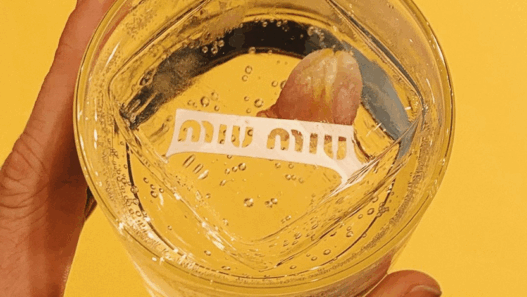As per Section 2(aaa) of the Drug and Cosmetic Act 1940, “cosmetic” means any article intended to be rubbed, poured, sprinkled or sprayed on, or introduced into, or otherwise applicated to, the human body or any part thereof for cleansing, beautifying, promoting attractiveness, or altering the appearance, and includes any article intended for use as a component of cosmetic.
The necessity for environmental protection and conservation, as well as the sustainable use of natural resources, is reflected in India’s constitutional framework and international commitments. Part IVA (Art 51A-Fundamental Duties) of the Indian Constitution imposes a duty on every Indian citizen to safeguard and improve the natural environment, including forests, lakes, rivers, and animals, as well as to have compassion for living creatures. Furthermore, Part IV of the Indian Constitution (Art 48A-Directive Principles of State Policies) states that the government must work to maintain and improve the environment, as well as the country’s forests and animals.
Eco-Friendly Brands Available In India For An All-Natural Experience
1. Forest Essentials
‘If you can’t eat it, don’t use it,’ is the brand’s mantra, and they certainly live up to it. With its Ayurvedic roots, the brand strikes a balance between natural skin nourishment and environmental protection, using paper packaging and glass containers with minimal plastic use. In addition to being cruelty-free, the brand uses homegrown ingredients from local farmers who practice efficient waste management.
2. Kama Ayurveda
Ayurvedic techniques from Tamil Nadu have been used to develop Kama Ayurveda’s therapies. Artificial colors and fragrances, as well as any sort of cruelty, are not used in these products. Sustaining forest communities is Kama Ayurveda’s mission to give back to society by sourcing locally grown ingredients to create the freshest and purest products possible.
3. SoulTree
From shampoos to kajals, SoulTree is your one-stop store for all things organic beauty. They ethically source ingredients from all around the country, supporting farmers and their production, in addition to giving the purest form of their beauty products. There are no artificial colors, fragrances, or dangerous chemicals, only environmentally friendly beauty products.
4. Ras Luxury Oils
As public awareness of synthetic substnces such as sulphates, parabens, silicones, and other widely found chemicals increases, brands like as Ras Luxury have taken it upon themselves to ensure that none of these are used on the skin. To keep its ‘farm to face’ idea alive, this Raipur-based firm sources all of its ingredients from sustainable farms in and around Raipur.
5. Pahadi Local
Pahadi Local’s unique cosmetic products contain the Himalayan treasures locked in a bottle. The beauty brand ensures that the sourcing and extraction methods have the least amount of carbon footprint possible. Local communities filter their oils with muslin cloth, ensuring that you only have the purest form of the product in your hands. Pahadi Local also empowers local women by providing employment and providing warm clothing to mountain children. The brand contributes to programs such as replanting, orchard development, and environmental protection, as well as making significant efforts to stay on the right side of sustainability through small steps.
6. Ruby’s Organics
We used only natural and organically obtained ingredients, free of artificial preservatives, to create on-trend makeup that is lightweight and long lasting. We take the initiative to provide employment to rural women so that they can shape their own life. They developed a full range of cosmetic staples using only natural and organically produced ingredients, as well as bio-active components that will nourish and care for your skin.
- Love Beauty and Planet
We keep track of our greenhouse gas emissions at every level of production and distribution and levy a carbon tax on ourselves, which goes into our carbon tax fund. Lavender, ylang ylang, and vetiver are just a few of the ingredients in our compositions that come from approved sustainable sources. The bottles, on the other hand, are constructed entirely of recyclable materials. We support the mission and vision of young environmental activists through a variety of partnerships, allowing them to continue working toward their goals for the greater good of the planet.
Cosmetic Regulation in India
India’s cosmetics sector is rapidly growing. Cosmetics demand has been increasing, particularly in urban areas, due to a variety of factors including increased spending power due to higher incomes, increased impact of western culture, desire to look better and more appealing, and so on. Cosmetics are another industry that must be properly regulated.
The Drugs and Cosmetics Act, 1940 and Drugs and Cosmetic Rules, 1945, The Legal Metrology Act, 2009 as well as the Bureau of Indian Standards (BIS), govern cosmetic products in India.
Labeling Requirements for Cosmetics in India
I. The Drug & Cosmetics Rules 1945
- Rule 148: Manner of labeling
- On both the inner and outer labels
- The name of the cosmetic product
- The manufacturer’s name and complete manufacturing address of the cosmetic.
- Details of Use before (Month and Year) of the cosmetic.
- On the outer label
Details of the net contents, including measurable weight for solids, fluid measure for liquids, and weight for semi-solids with numerical count.
- On the Inner Label; where a hazard exists
- How to use direction for the consumer.
- Any warning, caution or special direction for the user
- Names and quantities of the ingredients that are hazardous or poisonous.
- A batch number with details of manufacture from which the substance in the container is taken.
- Manufacturing and Use before date
- If a package of cosmetic has only one label, it shall contain all the information required to be shown on both the inner and the outer labels.
- The list of ingredients with a concentration of more than 1% must be in decreasing order of weight or volume at the time of addition, followed by those with a concentration of equal to or less than 1%, in any order, and preceded by the term “INGREDIENTS.”
II. The Legal Metrology Act, 2009
The Legal Metrology Act, 2009, and the Legal Metrology (Packaged Commodities) Rules, 2011 apply to all pre-packaged commodities imported into India. The importer of pre-packaged commodities must be registered under Rule 27 of the Legal Metrology (Packaged Commodities) Rules, 2011. The Standard of Weights and Measures Act of 1976 and the Standards of Weights and Measures (Enforcement) Act of 1985 are repealed and replaced by the Legal Metrology Act of 2009. However, after framing its own Legal Metrology (Enforcement) Rules for the state and announcement of the date from which it would enter into force, a state can enforce the provisions of the Act and Rules adopted thereunder.
- The Scheme on Labelling of Environment Friendly Products (Eco-Mark)[1]
The government has decided to implement a Scheme for Environmental Product Labeling. The Scheme will be implemented on a national level and will give accreditation and labeling for household and other consumer products that meet certain environmental standards as well as the quality requirements of Indian Standards. The label will be called “ECOMARK” and will have a design that will be announced. The Ministry of Environment, Forests and Climate Change (MoEF&CC) runs the initiative, with technical assistance from the Central Pollution Control Board (CPCB).
Eco-labels – An environmentally friendly product is one that is created, used, or disposed of in a way that greatly lessens the harm it would otherwise bring to the environment. Eco-labels are a kind of voluntary certification practised all over the world. Producers and service providers use the eco-label to show that they adhere to strict environmental protection requirements throughout the product’s and service’s life cycle. Eco-labels are crucial for promoting international sustainable consumption and production policies that aim to reduce the negative impact of consumption and production on the environment, health, climate, and natural resources while also encouraging corporate social responsibility and sustainable lifestyles.
The EcoMark Logo- An earthen pot signifies the Ecomark scheme, which makes use of a renewable resource like earth, produces no hazardous waste, and uses less energy in the process. It conveys its environmental message, and the image has the power to reach out to people in order to raise awareness of the need to be environmentally conscious.
Requirements- To be eligible for the ECO logo, a product must also bear the BIS Standard Mark and fulfill other environmentally friendly requirements. The BIS Standard Mark would be a single mark that combined the BIS monogram and the ECO logo for this purpose. Additional requirements for environmental friendliness will be imposed, and manufacturing units will be free to choose the Standard Mark alone.
When applying for a mark, the manufacturer must submit to BIS an environmental consent clearance from the concerned State Pollution Control Board, as required by the Water (Prevention and Control of Pollution) Cess Act 1977 and the Air (Prevention and Control of Pollution) Act 1981, as well as any authorization required by the Environment (Protection) Act, 1986 and the Rules made there under. In addition, the provisions of the Drugs and Cosmetics Act of 1940, as well as the Rules promulgated under it, must be followed.
Objectives of the Scheme- The objectives of the scheme are as follows-
- To encourage manufacturers and importers to lessen the negative environmental impact of their products.
- To recognize companies who take serious steps to reduce their products’ negative environmental impact.
- To help consumers become more environmentally aware in their daily lives by giving information that allows them to consider environmental considerations while making purchases.
- Encourage citizens to buy products that are less detrimental to the environment.
- Ultimately, to improve environmental quality and encourage resource management that is sustainable.
Competent Authority
The Central Drugs Standard Control Organization (CDSCO) is the main agency in charge of regulating cosmetics-related operations and drafting appropriate rules. The Drugs Controller General (India) (DCGI) is the executive branch of CDSCO, and it is responsible for operations such as registration and licensing applications.
All cosmetics imported for sale in India must now be registered with the Central Drugs Standard Control Organization (CDSCO), which has been designated as the licensing body for these laws. This new “registration” requirement is largely intended to curb indiscriminate imports of beauty and personal care items by traders who are not responsible for their contents and have no mechanism in place to assign blame if a consumer is dissatisfied with the quality.[2]
Medicament vs Cosmetic[3]
It is essential for cosmetics manufacturers to classify their products as medicaments, which are subject to a 15% central excise duty, as opposed to cosmetics, which are subject to a 15% levy. “Care or cure” is the clue of the lis (dispute) arising in these cases, according to Justice Mukhopadhaya and Justice Kurian Joseph. It is not a medicament if the primary role of a product is “care” and not “cure.” It was observed that- Cosmetic items are used to enhance or improve a person’s appearance or beauty, whereas medicinal products are designed to treat or cure any medical ailment.
Ban plastic microbeads in cosmetics
In 2013, the National Green Tribunal (NGT) sent notices to the ministries of the environment, water resources, and health, requesting input on microbeads found in personal care products. Microbeads are tiny plastic particles that, when used in soap, toothpaste, and other products, work as exfoliators (removing dead cells) on the skin and teeth. According to marine scientists, “they block the digestive tracts of even enormous mammals and small fish, and choking them to death.” In October 2017, the BIS issued a list of substances that could not be used in cosmetics after a year-long case before the country’s green court, the National Green Tribunal (NGT). Plastic microbeads were among them.
Animal testing banned
In 20114, the Government amended the country’s drugs and cosmetics rules, prohibiting animal testing of cosmetics as well as the importation of animal-tested cosmetics. India was the first country in South Asia to enact such a prohibition. Further clarifications were made in this regard, stating that the importer must get an official undertaking from the manufacturer (legal/brand owner) stating that the cosmetic items were not tested on animals on or after November 12, 2014. This undertaking, along with the registration-related documents, shall be submitted to CDSCO by new applicants, and a copy of the undertaking must be produced at the ports for consignment clearance.[4]
CONCLUSION
Thus, it is imperative that cosmetic laws and regulations be harmonized for the purposes of product development, stability, safety, quality, and efficacy of cosmetics. Instead of different state authorities operating under their own state rules, all rules and regulations must be unified and synchronized at the national level by a single authority, CDSCO. As a result, there is a need to strengthen the legislation governing control standards and safety information for cosmetics in India in order to ensure that finished cosmetic goods are safe.
[1] Gazette of India, Extraordinary, Part 2, Section 3 (ii), dated 21st February, 1991.
[2] Gazette Notification G.S.R 426(E) dated 19th May 2010.
[3] Dhananjay Mahapatra, Medicine or cosmetic? SC uses ‘cure or care’ formula, TOI (Aug 18, 2013, 05:03 PM), https://timesofindia.indiatimes.com/india/medicine-or-cosmetic-sc-uses-cure-or-care-formula/articleshow/21889475.cms.
[4] Gazette of India, Extraordinary, Part II, Section 3, Sub-section (i), vide number G.S.R. 690(E), dated the 25th September, 2014.
Author: Lipika Sharma, Content Writer at Fashion & Law Journal


















